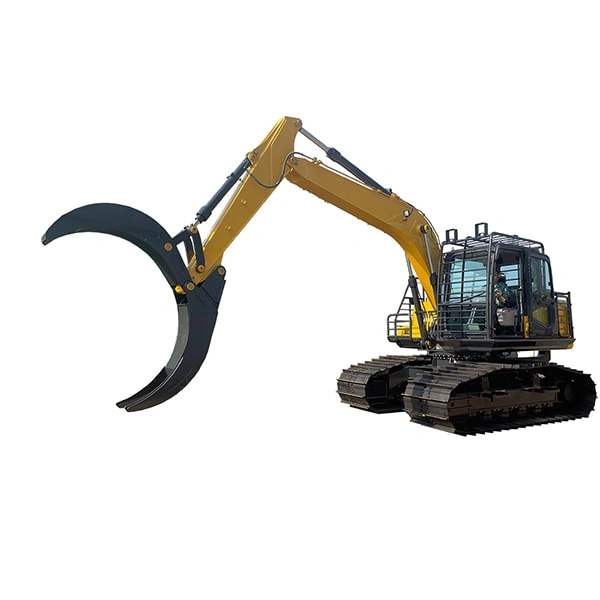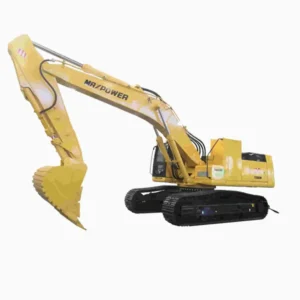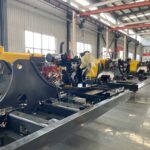Forestry excavators have become an indispensable tool in the forestry industry. These powerful machines play a crucial role in various operations, from land clearing to wetland restoration. If you’ve ever had fears or doubts about using forestry excavators, it’s time to put them to rest. In this article, we will explore the benefits, features, applications, and safety considerations associated with forestry excavators, allowing you to gain a deeper understanding of their capabilities and make informed decisions. So, let’s dive in and discover how forestry excavators can revolutionize your forestry operations.
Introduction to Forestry Excavators

Forestry excavators, also known as forest machines or tracked excavators, are heavy-duty equipment specifically designed for forestry applications. These robust machines combine the functions of a traditional excavator with specialized attachments and features tailored to the unique demands of the forestry industry. From tree removal and land clearing to road construction and wetland conservation, forestry excavators offer a versatile and efficient solution for various tasks.
Advantages of Using Forestry Excavators
Excavators bring numerous advantages to forestry operations, making them a preferred choice for professionals in the field. Let’s explore some of the key benefits:
- Versatility and Adaptability: Forestry excavators are highly versatile and can be equipped with a wide range of attachments, such as mulchers, grapples, and stump grinders. This adaptability allows operators to tackle diverse tasks using a single machine, saving time and resources.
- Enhanced Productivity and Efficiency: With their powerful engines and hydraulic systems, forestry excavators provide exceptional digging, lifting, and loading capabilities. These machines enable faster completion of tasks, resulting in increased productivity and improved overall efficiency.
- Reduced Environmental Impact: Forest conservation is a critical consideration in modern forestry practices. Forestry excavators incorporate environmentally friendly features, such as low-emission engines and specialized attachments for selective tree removal, minimizing the impact on surrounding vegetation and ecosystems.
Key Features of Forestry Excavators
Excavators boast several features that contribute to their exceptional performance in the field. Let’s take a closer look at some of these key features:
- Heavy-duty Construction: Forestry excavators are built to withstand demanding conditions. They are equipped with reinforced undercarriages, protective structures, and specialized guarding to safeguard against impacts, debris, and harsh environments.
- Specialized Attachments: These machines can be equipped with various attachments based on the task at hand. Mulchers are ideal for vegetation clearance, grapples excel at handling timber, and stump grinders make quick work of tree stumps. The versatility of attachments allows for efficient and precise operations.
- Advanced Technology Integration: Modern excavators integrate advanced technologies to enhance performance and efficiency. Features such as GPS tracking, automated grading systems, and remote monitoring enable operators to optimize their workflows, reduce errors, and streamline operations.
Applications of Forestry Excavators
Excavators find extensive use in a wide range of forestry applications. Let’s explore some of the common tasks where these machines excel:
- Tree Removal and Land Clearing: Forestry excavators are highly effective at felling trees, removing stumps, and clearing land for various purposes, including timber harvesting, site preparation, and urban development.
- Road Construction and Maintenance: These machines play a vital role in constructing forest roads, maintaining existing routes, and improving accessibility in remote areas. Forestry excavators are capable of grading, trenching, and compacting, making them indispensable for roadwork.
- Wetland Restoration and Conservation: Protecting and restoring wetland habitats is crucial for preserving biodiversity.Excavators equipped with specialized attachments can efficiently remove invasive vegetation, dredge waterways, and reshape wetlands, aiding in conservation efforts.
Factors to Consider When Choosing a Forestry Excavator
Selecting the right excavator for your specific needs requires careful consideration of various factors. Here are some essential aspects to evaluate:
- Size and Weight: The size and weight of the excavator should align with the scale of your operations. Larger machines offer greater power and reach but may be less maneuverable in tight spaces. Consider the terrain, access points, and project requirements when selecting the appropriate size.
- Operating Capabilities: Evaluate the digging depth, lifting capacity, and reach of different excavator models. Match these specifications to the tasks you frequently encounter to ensure optimal performance and productivity.
- Maintenance and Service Requirements: Regular maintenance and servicing are crucial for the longevity and reliability of your forestry excavator. Consider the availability of spare parts, service centers, and the manufacturer’s reputation for after-sales support.
Safety Considerations for Operating Forestry Excavators
Safety should always be a top priority when operating forestry excavators. Follow these essential guidelines to ensure a secure working environment:
- Operator Training and Certification: Proper training and certification for operators are essential to understand the machine’s capabilities, safe operation, and emergency procedures. Ongoing training programs should be implemented to keep up with the latest industry standards.
- Protective Equipment and Protocols: Operators must wear appropriate personal protective equipment, including helmets, high-visibility clothing, and safety boots. Establish protocols for safe entry and exit, secure load handling, and communication on-site.
- Risk Assessment and Mitigation: Conduct thorough risk assessments before commencing any task. Identify potential hazards, such as unstable ground, overhead obstructions, or proximity to power lines, and implement measures to mitigate these risks.
Best Practices for Maximizing the Performance of Forestry Excavators

To optimize the performance and lifespan of your forestry excavator, consider implementing these best practices:
- Regular Maintenance and Inspections: Adhere to the manufacturer’s recommended maintenance schedule and conduct routine inspections of the machine. This includes checking fluid levels, lubricating moving parts, and inspecting tracks, attachments, and safety systems.
- Proper Attachment Selection and Usage: Choose the appropriate attachment for each task to ensure efficient and safe operation. Follow the manufacturer’s guidelines for attachment installation, usage, and maintenance to maximize performance and prevent damage.
- Efficient Operation Techniques: Train operators on efficient operation techniques, such as smooth operation of controls, minimizing unnecessary movements, and using the machine’s full reach and capabilities. This enhances productivity, reduces fuel consumption, and minimizes wear and tear.
Future Trends in Forestry Excavators
The field of excavators is continuously evolving, incorporating new technologies and trends. Here are some future developments to look forward to:
Advancements in Automation and Robotics: Autonomous and semi-autonomous forestry excavators are expected to gain prominence, enhancing productivity, and reducing the need for manual labor. Automated grading systems and remote-controlled operations will become more prevalent.
Integration of Sustainable Technologies: Excavators will continue to adopt sustainable technologies, such as hybrid or electric power systems, to reduce environmental impact and lower operating costs. Innovations in battery technology and energy management will drive these advancements.
Enhanced Safety Features: As safety remains a top priority, future excavators will incorporate advanced safety features. This includes improved operator detection systems, collision avoidance technologies, and real-time monitoring for fatigue or distraction.
Conclusion
Excavators are a game-changer in the forestry industry, offering versatility, efficiency, and reduced environmental impact. By understanding the advantages, features, applications, and safety considerations associated with forestry excavators, you can harness their full potential in your operations. Keep abreast of the latest trends and best practices to stay ahead in this evolving field. Embrace the power of forestry excavators and unlock new levels of productivity and sustainability in your forestry endeavors.
FAQs
Are forestry excavators only used in the forestry industry?
Forestry excavators are primarily designed for forestry applications, but they can also be utilized in other industries such as construction, landscaping, and agriculture.
Can forestry excavators handle steep terrains?
Yes, excavators are designed to handle challenging terrains, including steep slopes and rough landscapes. Their robust construction and specialized tracks provide excellent stability and traction.
How long does it take to become proficient in operating a forestry excavator?
The time required to become proficient in operating a forestry excavator can vary depending on the individual’s prior experience and the complexity of tasks. Adequate training and practice are essential to ensure safe and efficient operation.
What are some common maintenance tasks for forestry excavators?
Common maintenance tasks include regular fluid checks and replacements, track inspections and adjustments, lubrication of moving parts, filter replacements, and inspection of hydraulic systems for leaks or malfunctions.
Are forestry excavators expensive to maintain?
The maintenance costs of excavators can vary depending on factors such as the machine’s age, usage, and the availability of spare parts. Regular maintenance and prompt repairs can help minimize long-term costs.







-150x150.webp)
